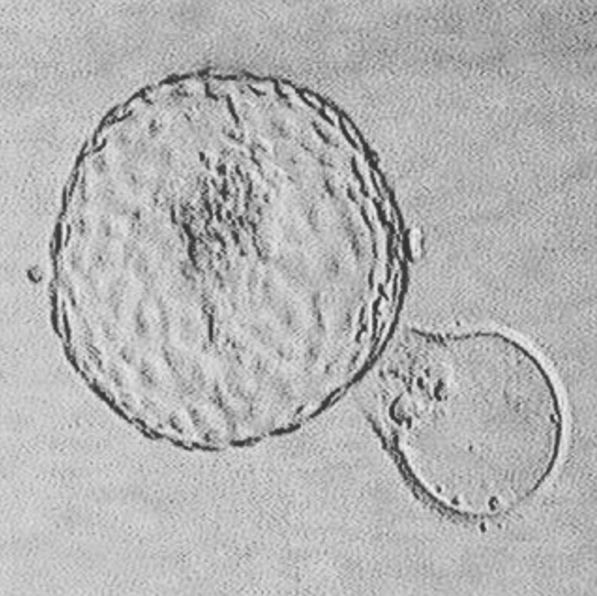A day 5 or 6 embryo is a much more advanced structure than a 3 day old embryo and the real advantage is the potentially higher live birth rate associated with this type of transfer.
In a standard IVF cycle embryos are transferred to the womb two to three days after egg collection and insemination (this is referred to as a Day 2 or 3 transfer). With a blastocyst transfer, the embryo has advanced to the 5 or 6 day stage. This means the embryo has divided many more times into many more cells over this period. Blastocysts have a very thin outer shell thus potentially increasing the chances of implantation into the uterine cavity. While the majority of fertilised eggs will develop into a three-day old embryo, only perhaps 40% of these embryos will develop into a blastocyst, so they are considered to be a more "select" group of embryos with a higher chance of pregnancy.

As the embryo develops into the blastocyst stage (late day 4 onward), it needs to escape the "shell" that once protected it. The blastocyst continues to fill with fluid and weakens the shell. Eventually the blastocyst hatches out of the shell (pictured) and is ready to implant into the lining of the uterus. This is thought to happen around 7-8 days post insemination.
If you have experienced recurrent implantation failure, blastocyst extended culture gives us the opportunity to examine embryos over a longer period. If embryos arrest or become fragmented, this can help us identify any potential problems. When a single embryo transfer is specifically required, typically for anyone who has a history of multiple pregnancy or a uterine issue, blastocyst transfer may be a particularly useful option.
We know that at least 50% (or higher in women over 40) of embryos are not viable, and many of these embryos stop developing before day 5 or 6. A large proportion may have an incorrect number of chromosomes and it is believed that those embryos which failed to develop to day 5 or 6 would not, in any event, have established a pregnancy. Where there are large numbers of good quality embryos available at the blastocyst stage these can be frozen. We have seen excellent post thaw survival and pregnancy rates with frozen blastocysts.
Research has shown that conditions in the womb may be more optimal for a blastocyst than a day 2/3 embryo as there are slightly differing conditions in the fallopian tube and the womb.
Data suggests that blastocyst transfer can increase the chances of a live birth. Please bear in mind that every one is an individual and your consultant or embryologist will advise on which approach is best for you
Some patients have a high number of frozen embryos and one option is to thaw all embryos and culture through to the blastocyst stage to allow the best 1 or 2 embryos to be replaced based on their development. Please remember that the extended culture process doesn't enhance an embryos quality per se, it is a way of choosing the most viable from a group of embryos.